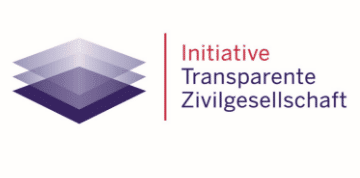Orangutan Sanctuaries
We are currently caring for over 400 rescued, orphaned, and confiscated orangutans in two rescue centers. We are preparing them for a life in the wild. However, their journey to freedom is as diverse as the fates of the animals that come to us.
Discover the Orangutan Journey to Freedom
Orangutans are the last great apes of Asia. In the wild, they mostly live as solitary animals high up in the trees of the rainforests of Borneo and Sumatra, their natural habitat. However, their sanctuary is increasingly threatened by deforestation, illicit wildlife trade, and human encroachments. The harrowing reality they face includes being hunted, captured, or even kept as pets. Their predicament demands a united human response. The orangutans need our help.
More than 400 animals in two orangutan rescue centres
The Borneo Orangutan Survival Foundation runs two orangutan rescue centres (Samboja Lestari and Nyaru Menteng) on Borneo (Indonesia) , where currently around 400 rescued, confiscated, injured and orphaned orangutans have found refuge. An extensive rehabilitation programme is preparing the peaceful primates for a life in freedom.
How does a rescue centre work?
In the centres, the animals receive medical care, sufficient healthy food and training for an independent life in the rainforest. Through stages like the forest kindergarten, forest school, and pre-release islands, they are prepared to embrace the wilderness once again. Our ultimate goal is their release into secure protected areas, where they can thrive, reproduce, and contribute to their species’ survival. However, the journey to freedom is as diverse as the individuals we rescue.
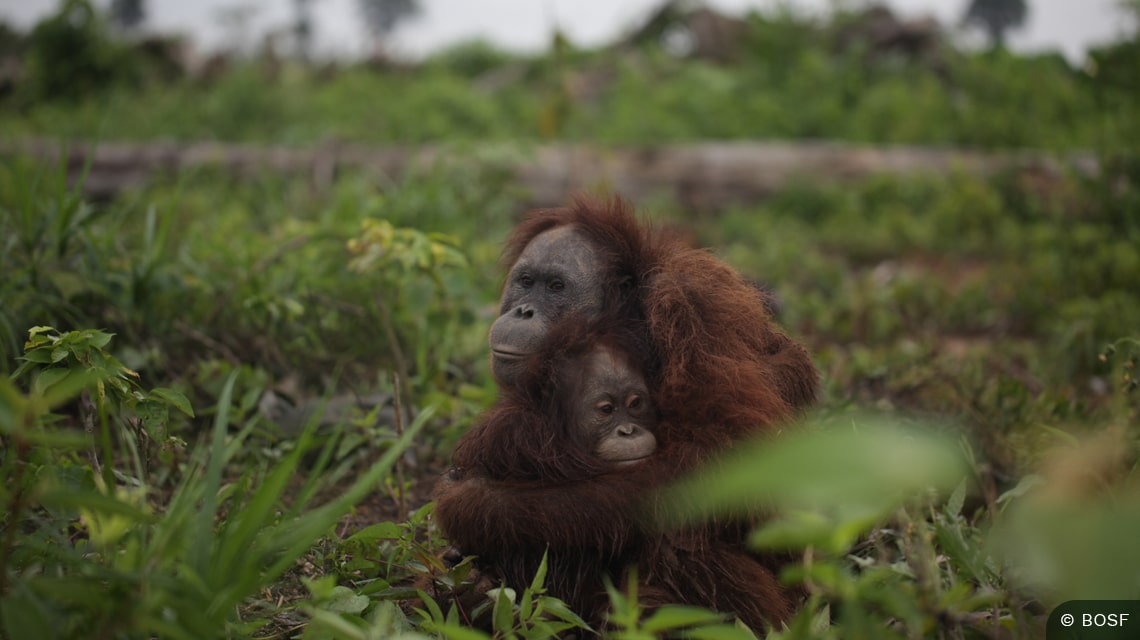
Many orangutans have lost their habitat.
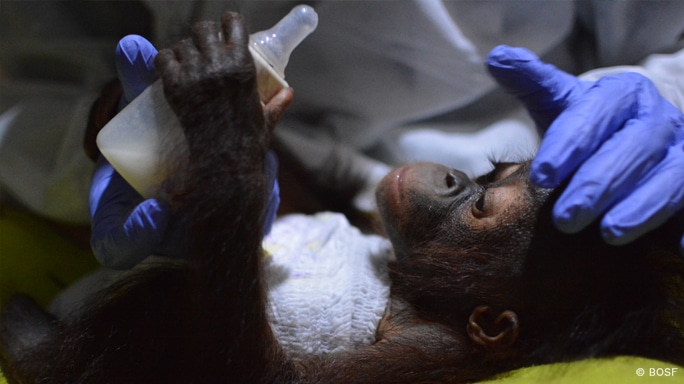
Ramangai came as 6 months baby to BOSF sanctuary.
An orangutan rescue
BOS works closely with the Indonesian conservation authority BKSDA on animal rescues. As soon as a report of an injured, orphaned or illegally petted orangutan is received, the teams move out together.
You are currently viewing a placeholder content from YouTube. To access the actual content, click the button below. Please note that doing so will share data with third-party providers.
More InformationUniting Forces for the orangutans
If an adult animal is in distress, it is sedated by a BOS veterinarian and examined right on the spot. If its health condition is stable, it is relocated directly to a safe forest area. If the orangutan is sick or injured, it is brought to the rescue centre’s veterinary clinic for medical care. There, an individual decision is made on how to proceed with the animal once treatment is completed.
Human animal conflicts
Often it is workers on palm oil plantations who report the animals. As humans penetrate deeper and deeper into the orangutans’ habitat, they come closer and closer to humans in their search for food — a human-animal conflict that is coming to a head. The orangutans are fortunate if the workers alert BOS or the responsible nature conservation authority instead of simply killing the animals. But even though killing the animals is a criminal offence under Indonesian law, this still happens frequently: Poachers shoot the mothers to sell the babies on the black market. Although it is forbidden, keeping an orangutan as a pet is considered a status symbol in Indonesia.
Our Conservation Centers as a New Opportunity
The international market also offers poachers a very lucrative income for orangutan babies. If the authorities manage to track down these animals, they are confiscated and handed over to the BOS Foundation. They are then sent to our orangutan sanctuaries, where a large team with a lot of commitment and knowledge takes care of the rehabilitation of the animals. Our goal is that one day the animals will be released and can live in freedom again.
In order to achieve this goal, we need strong partners at our side. That is why we cooperate closely with International Animal Rescue, for example, and exchange information on the status of the respective rescues. Together we are stronger, and we know more. A dedicated network is important to get information and to collaborate on solutions for animal welfare.
Medical care and quarantine
Upon arrival at our sanctuary, every orangutan receives thorough medical evaluation, vaccinations, and necessary treatments from our skilled veterinarians. Quarantine, lasting three months, offers a protective haven as they recover from diseases such as tuberculosis or hepatitis, often contracted from humans. Some bear visible wounds, while others carry hidden traumas. BOS provides round-the-clock care and a rehabilitation process fueled by dedication and compassion.
Fingerprints as well as nail, blood and hair samples are taken for genetic testing from every orangutan that comes to BOS . On the one hand, this ensures that the animals can be clearly identified throughout their lives. In addition, it helps in locating the right areas for a possible subsequent reintroduction of the orangutans into the wild. This is because there are Bornean orangutan subspecies whose gene pools should not be mixed. Such mixing could have a negative impact on the survivability of populations that are already threatened. A microchip is also implanted under the skin. This does not hurt the animal and facilitates faster identification during follow-up examinations.
Throughout their time in our sanctuaries, the orangutans receive regular medical check-ups and care. Once a year, they have a major health check-up. Doctors document the animals’ height and weight, check their blood and take x‑rays. Finally, the teeth are checked. If everything is OK, the orangutans are allowed to return to the others. If they are sick or have an infection, they stay in the quarantine ward for further treatment.
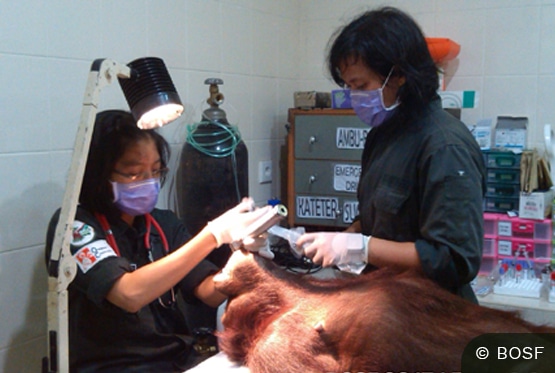
Regular medical checkups
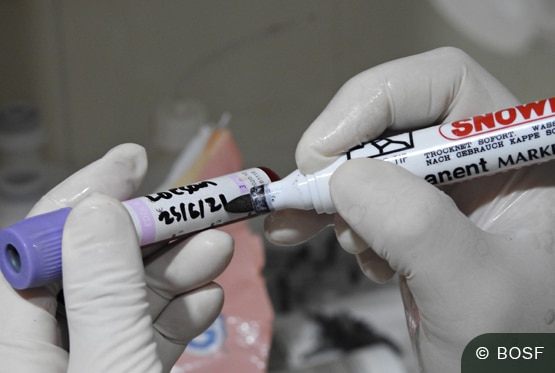
All tests are labeled with cautious
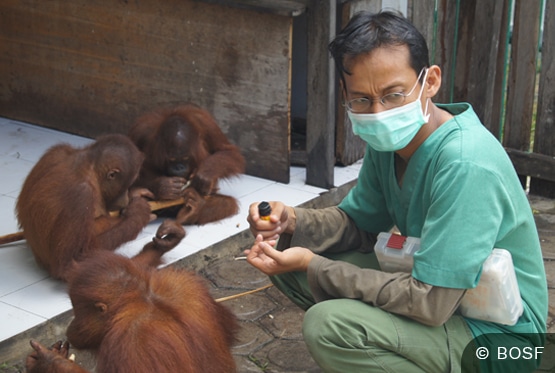
Our vets are essential for the orangutan care
What does the orangutan rehabilitation involve?
As soon as the quarantine is over and the animals are in good health, their individual rehabilitation begins. The aim is to enable the orangutans to survive independently in the jungle and to reproduce there. The specific measures depend on the age, stage of development and state of health of the individual animal.
Some can leave our centres soon because of their existing survival skills. But most stay for many years — especially if they come to our orangutan centre on Borneo as babies. Then they go through all the grades of the orangutan jungle school where they learn everything necessary for a life in freedom.
In the wild, orangutans are taught all they need for survival by their mother during the first seven to eight years of their lives. Both are inseparable. In addition to acquiring the necessary skills, the mother’s physical contact and permanent availability are particularly important during this time. Due to emotional reasons the Intensive care and loving attention are therefore very important for the often traumatised orphans.
Last stop before independence
The last stop before release is the so called Forest University – the prerelease islands of BOSF rescue centers. Currently, we have five pre-release islands with around one hundred animals. Being completely on their own for the first time and without direct human contact, they have to prove on these islands that they are capable of living independently.
Our vets regularly monitor the health of the potential release candidates. The decision as to when they are ready to live freely for good is made collectively.
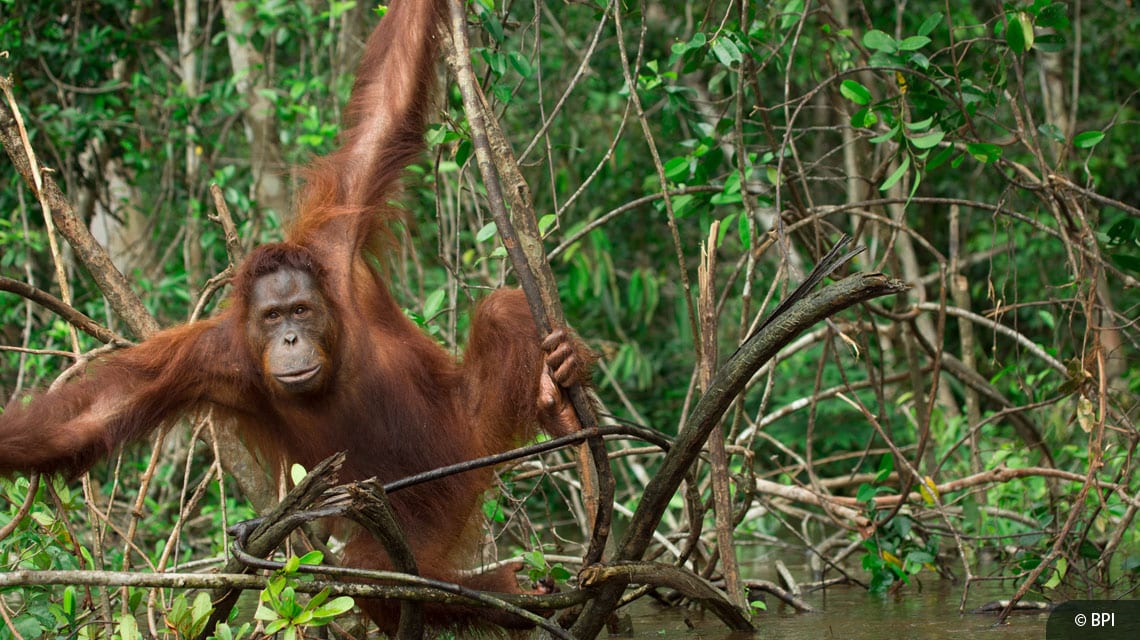
The so called Forest universities are the last stop before release for the orangutans
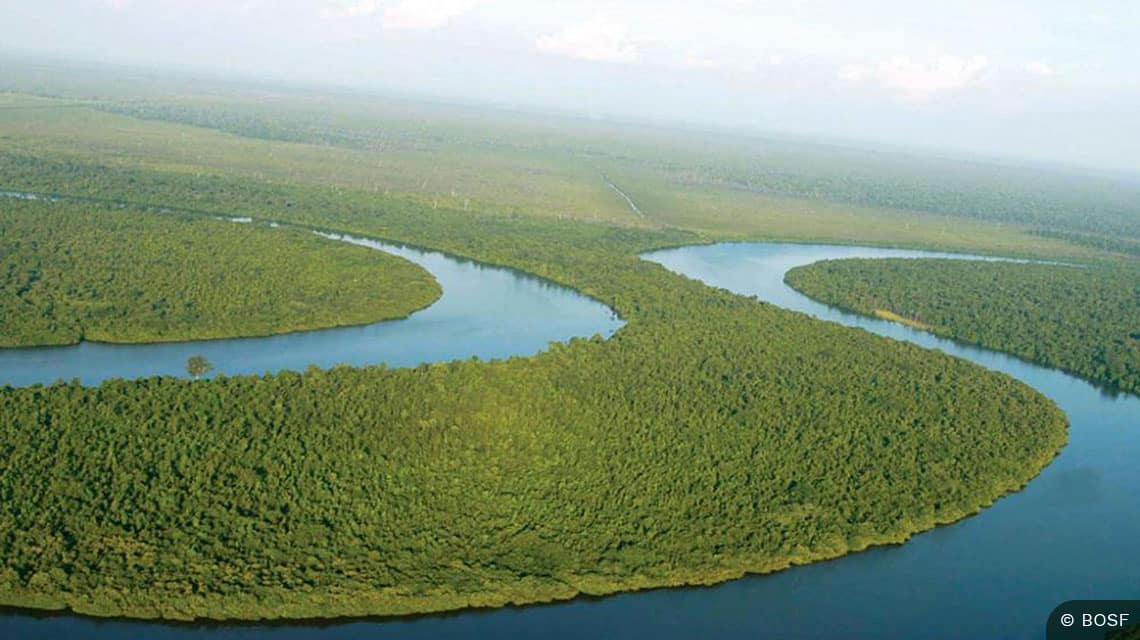
Through sanctuary islands BOSF provides life in dignity for the unreleasable orangutans
Providing Sanctuary for Every Story
While some orangutans overcome unimaginable hardships, others bear wounds that refuse to heal fully. Be it severe trauma, incurable illnesses, or lasting physical limitations, these individuals cannot return to the wild. Yet, they find solace in a forever home at BOS. Our expanding sanctuary islands mimic the wild, providing a haven where these resilient souls can thrive and feel at home.
Make a donation for the orangutans
Make a one-time donation
Orangutans need our help! With your donation for the orangutans you accompany and support an orangutan on its journey until its release into the wild.
Make a donation for the orangutans
Make a one-time donation
Orangutans need our help! With your donation for the orangutans you accompany and support an orangutan on its journey until its release into the wild.
Frequently asked questions
Where are the Borneo Orangutan Survival Foundation centers located
Your Subtitle Goes Here
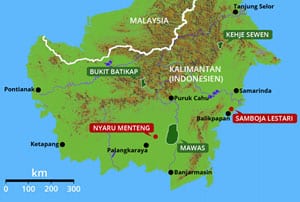 They are in Borneo (locally known as Kalimantan). Specifically, Nyaru Menteng is in Central Kalimantan, while Samboja Lestari is situated near Balikpapan in East Kalimantan.
They are in Borneo (locally known as Kalimantan). Specifically, Nyaru Menteng is in Central Kalimantan, while Samboja Lestari is situated near Balikpapan in East Kalimantan.
What is the primary role of these rescue centers?
Your Subtitle Goes Here
Our rescue stations serve as rehabilitation hubs for over 400 orangutans. Through comprehensive care, we prepare them for life back in the wild. These centers, in operation for three decades, have enabled nearly 500 orangutans to return to the wild and contribute to the species conservation.
How many orangutans live in the centres?
Your Subtitle Goes Here
Presently, our two centers provide refuge to over 400 orangutans.
Where can you still find wild living orangutans today?
Your Subtitle Goes Here
Today, orangutans can only be found on the Southeast Asian islands of Borneo and Sumatra. On Sumatra, the Sumatran orangutan (Pongo abelii) and the Tapanuli orangutan (Pongo tapanuliensis) are mainly living in the western and northwestern parts of the island. On Borneo, they are predominantly found in the southern and eastern regions.

You have a question?
Donations are a matter of trust
Transparent use of funds is a matter of course for us. In September 2013, we joined the a non profit initiative of Transparency International Germany and signed its declaration of commitment.
